Static and Fatigue Debond Resistance between the Composite Facesheet and Al Cores under Mode-1 in Sandwich Beams
Abstract
:1. Introduction
2. Materials and Methods
2.1. Interfacial Fracture Toughness Calculation
2.2. Sizing of SCB Specimen
2.3. Specimen Design and Fabrication
2.4. Test Methodology
3. Results and Discussions
3.1. Effects of Different Core Geometry on the Interfacial Toughness of Sandwich Structures under Static Loading
3.1.1. Load versus Displacement Response
3.1.2. Interfacial Fracture Toughness
3.2. Mode-I Fatigue Interfacial Toughness Testing
4. Results and Discussions
5. Conclusions
Author Contributions
Funding
Conflicts of Interest
References
- Carlsson, L.A.; Kardomateas, G.A. Structural and Failure Mechanics of Sandwich Composites; Springer Science & Business Media: Berlin/Heidelberg, Germany, 2011; Volume 121. [Google Scholar]
- Vantini, U. Investigating Effects of Pure Shear Deformation in Wind Turbine Blade Sub-Structures. Master’s Thesis, Polytechnic University of Milan, Milan, Italy, 2014. [Google Scholar]
- Langenbrunner, L.L.; Price, R.T.; Baldwin, J.W. Impact Resistant Fan Case Liner. U.S. Patent US08/058,643, 6 September 1994. [Google Scholar]
- Geng, D.; Yi, K.; Shang, C.; Yang, J.; He, Y. Application status of composite acoustic liner in aero-engine. In Proceedings of the 10th International Conference on Composite Science and Technology, Lisbon, Portugal, 2–4 September 2015; pp. 2–4. [Google Scholar]
- Prabhu, G.; Katakam, V.; Sridharan, V.S.; Idapalapati, S. Uniaxial tensile failure of multi-core asymmetric sandwich composite structures with bonded repair. Compos. Struct. 2019, 224, 111025. [Google Scholar] [CrossRef]
- A05F0047; Loss of Rudder, Airbus 310–308, Air Transat Flight 961. Minister of Public Works and Government Services Canada: Quebec City, QC, Canada, 2005.
- Shipsha, A.; Burman, M.; Zenkert, D. A Comparative Study of Mode I Fatigue Crack Propagation in Foam Cores for Sandwich Structures by Using Different Test Specimens; ICCM-12 International Committee on Composite Materials: Paris, France, 1999. [Google Scholar]
- Berkowitz, C.K.; Johnson, W.S. Fracture and fatigue tests and analysis of composite sandwich structure. J. Compos. Mater. 2005, 39, 1417–1431. [Google Scholar] [CrossRef]
- Berggreen, C.; Saseendran, V.; Carlsson, L.A. A modified DCB-UBM test method for interfacial fracture toughness characterization of sandwich composites. Eng. Fract. Mech. 2018, 203, 208–223. [Google Scholar] [CrossRef]
- Manca, M.; Quispitupa, A.; Berggreen, C.; Carlsson, L.A. Face/core debond fatigue crack growth characterization using the sandwich mixed mode bending specimen. Compos. Part A Appl. Sci. Manuf. 2012, 43, 2120–2127. [Google Scholar] [CrossRef]
- Rinker, M.; John, M.; Zahlen, P.C.; Schäuble, R. Face sheet debonding in CFRP/PMI sandwich structures under quasi-static and fatigue loading considering residual thermal stress. Eng. Fract. Mech. 2011, 78, 2835–2847. [Google Scholar] [CrossRef]
- Saseendran, V.; Berggreen, C.; Carlsson, L.A. Fracture Mechanics Analysis of Reinforced DCB Sandwich Debond Specimen Loaded by Moments. AIAA J. 2018, 56, 413–422. [Google Scholar] [CrossRef] [Green Version]
- Cantwell, W.; Davies, P. A test technique for assessing core-skin adhesion in composite sandwich structures. J. Mater. Sci. Lett. 1994, 13, 203–205. [Google Scholar] [CrossRef]
- Prasad, S.; Carlsson, L.A. Debonding and crack kinking in foam core sandwich beams—II. Experimental investigation. Eng. Fract. Mech. 1994, 47, 825–841. [Google Scholar] [CrossRef]
- Cantwell, W.; Davies, P. A study of skin-core adhesion in glass fibre reinforced sandwich materials. Appl. Compos. Mater. 1996, 3, 407–420. [Google Scholar] [CrossRef]
- Cantwell, W.; Broster, G.; Davies, P. The influence of water immersion on skin-core debonding in GFRP-balsa sandwich structures. J. Reinf. Plast. Compos. 1996, 15, 1161–1172. [Google Scholar] [CrossRef]
- Cantwell, W.; Scudamore, R.; Ratcliffe, J.; Davies, P. Interfacial fracture in sandwich laminates. Compos. Sci. Technol. 1999, 59, 2079–2085. [Google Scholar] [CrossRef]
- McGarva, L.; Åström, B. Experimental investigation of compression moulding of glass/PA12-PMI foam core sandwich components. Compos. Part A Appl. Sci. Manuf. 1999, 30, 1171–1185. [Google Scholar] [CrossRef]
- Li, X.; Carlsson, L.A. The tilted sandwich debond (TSD) specimen for face/core interface fracture characterization. J. Sandw. Struct. Mater. 1999, 1, 60–75. [Google Scholar] [CrossRef]
- Li, X.; Carlsson, L.A. Elastic foundation analysis of tilted sandwich debond (TSD) specimen. J. Sandw. Struct. Mater. 2000, 2, 3–32. [Google Scholar] [CrossRef]
- Weaver, C.A. Evaluation of Mode I Fracture Mechanics Test Methods for Sandwich Composites; Department of Mechanical Engineeering, University of Utahp: Salt Lake City, UT, USA, 2010. [Google Scholar]
- Ratcliffe, J.G.; Reeder, J.R. Sizing a single cantilever beam specimen for characterizing facesheet–core debonding in sandwich structure. J. Compos. Mater. 2011, 45, 2669–2684. [Google Scholar] [CrossRef]
- ASTM D5528-13; Standard Test Method for Mode I Interlaminar Fracture Toughness of Unidirectional Fiber-Reinforced Polymer Matrix Composites. American Society of Testing and Materials: West Conshohocken, PA, USA, 2007.
- Rinker, M.; Ratcliffe, J.G.; Adams, D.O.; Krueger, R. Characterizing Facesheet/Core Disbonding in Honeycomb Core Sandwich structure. No. NASA/CR-2013-217959. Available online: https://ntrs.nasa.gov/api/citations/20130010408/downloads/20130010408.pdf (accessed on 16 November 2021).
- Paris, P.; Erdogan, F. A Critical Analysis of Crack Propagation Laws. J. Basic Eng. 1963, 85, 528–533. [Google Scholar] [CrossRef]
- ASTM D6115-97; Standard Test Method for Mode I Fatigue Delamination Growth Onset of Unidirectional Fiber-Reinforced Polymer Matrix Composites. American Society of Testing and Materials: West Conshohocken, PA, USA, 2019. [CrossRef]
- Ramkumar, R.; Whitcomb, J. Characterization of mode I and mixed-mode delamination growth in T300/5208 graphite/epoxy. In Delamination and Debonding of Materials; ASTM International: West Conshohocken, PA, USA, 1985. [Google Scholar]
- Tanaka, K.; Tanaka, H. Stress-ratio effect on mode II propagation of interlaminar fatigue cracks in graphite/epoxy composites. In Composite Materials: Fatigue and Fracture; ASTM International: West Conshohocken, PA, USA, 1997. [Google Scholar]
- Hojo, M.; Matsuda, S.; Tanaka, M.; Ochiai, S.; Murakami, A. Mode I delamination fatigue properties of interlayer-toughened CF/epoxy laminates. Compos. Sci. Technol. 2006, 66, 665–675. [Google Scholar] [CrossRef]
- Saseendran, V. Fracture Characterization and Analysis of Debonded Sandwich Composites. Ph.D. Thesis, Technical University of Denmark, Lyngby, Denmark, 2017. [Google Scholar]
- Zenkert, D. An Investigation to Sandwich Construction; Chameleon Press: London, UK, 1995. [Google Scholar]
- Gleich, D.; Van Tooren, M.; De Haan, P. Shear and peel stress analysis of an adhesively bonded scarf joint. J. Adhes. Sci. Technol. 2000, 14, 879–893. [Google Scholar] [CrossRef]
- Adams, D.O.; Kessler, J.A.; Kuramoto, B.; Bluth, J.; Weaver, C.; Gill, A. Development and Evaluation of Fracture Mechanics Test Methods For Sandwich Composites. In Proceedings of the 2010 FAA JAMS Technical Review Meeting, Wichita, KS, USA, 21–22 July 2010. [Google Scholar]
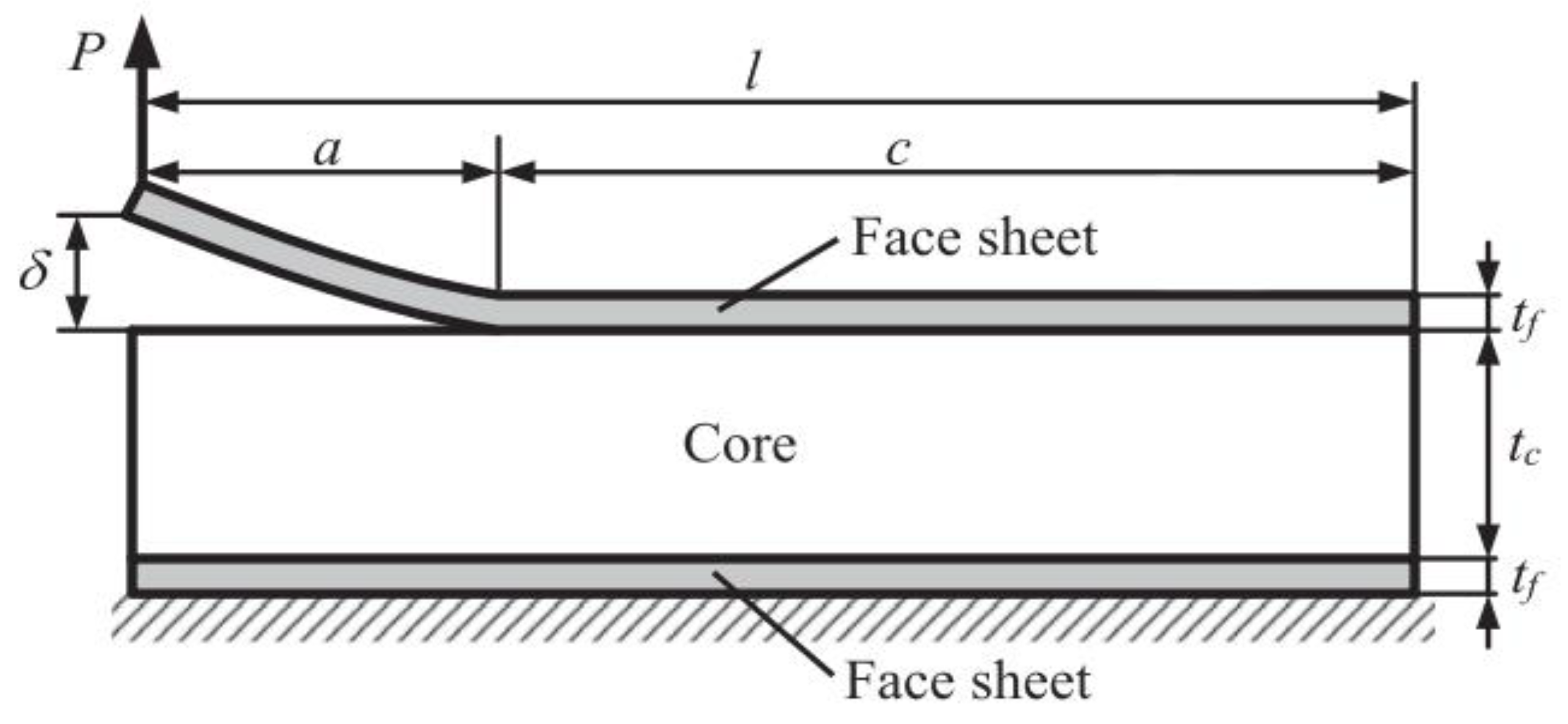
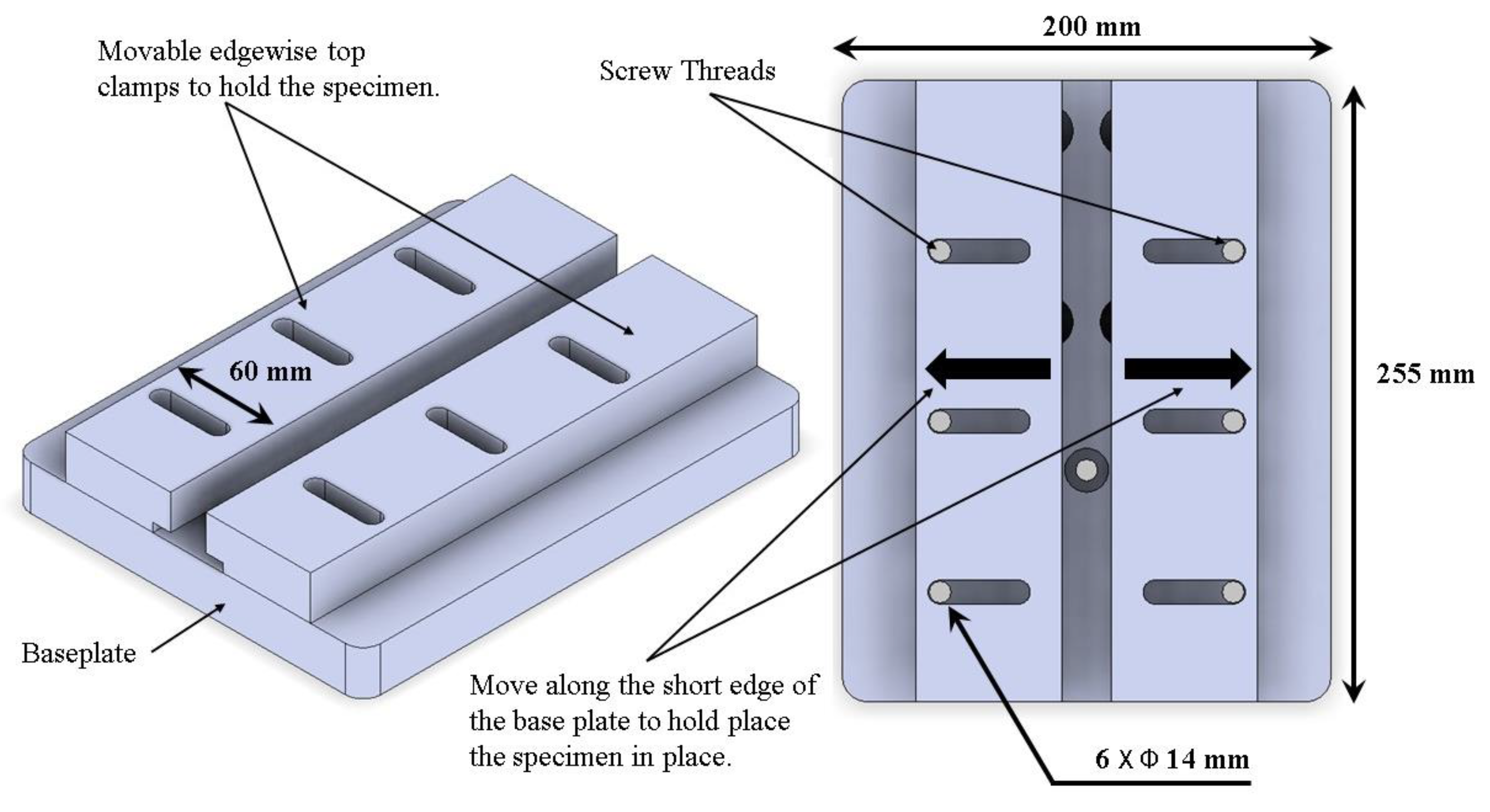




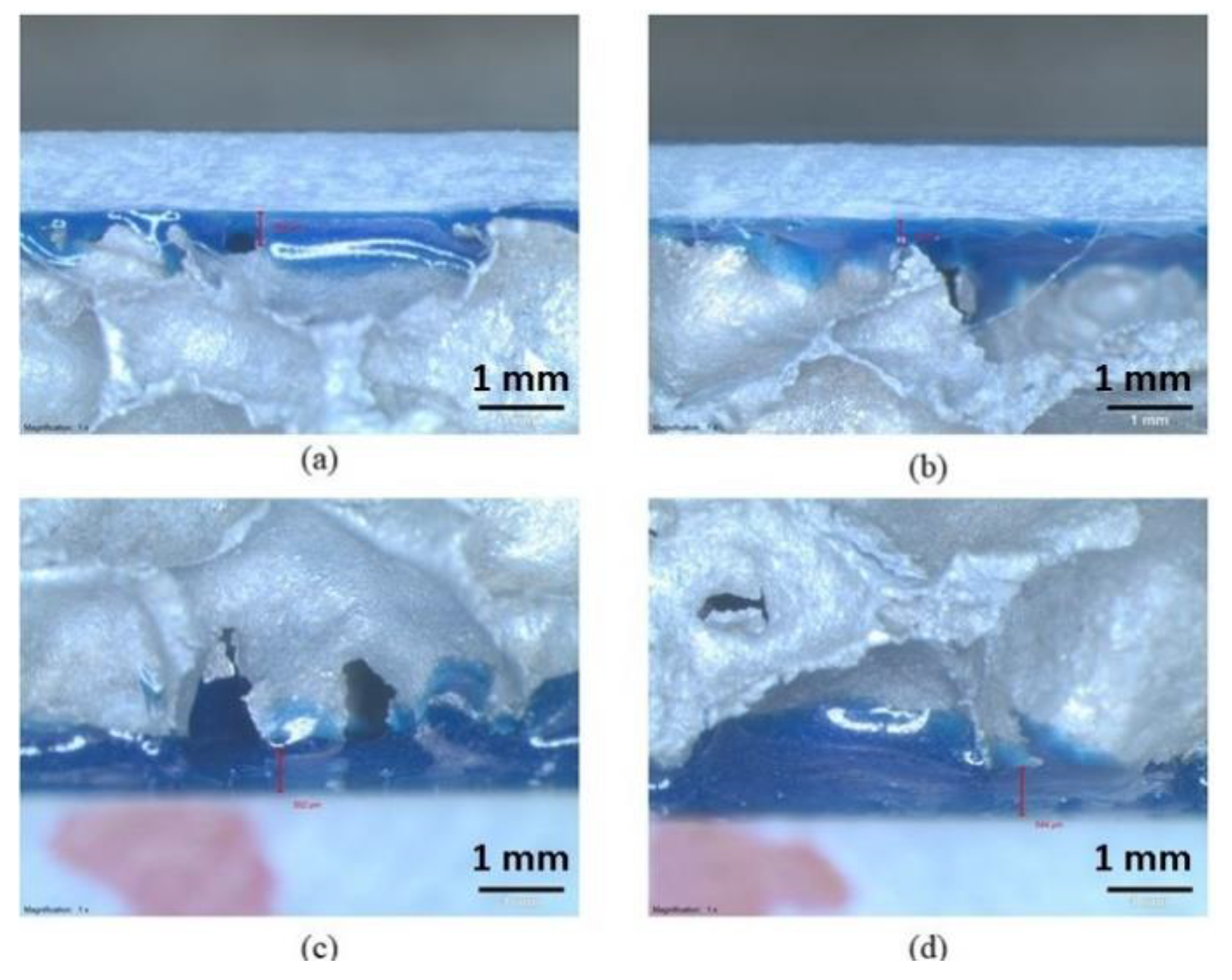
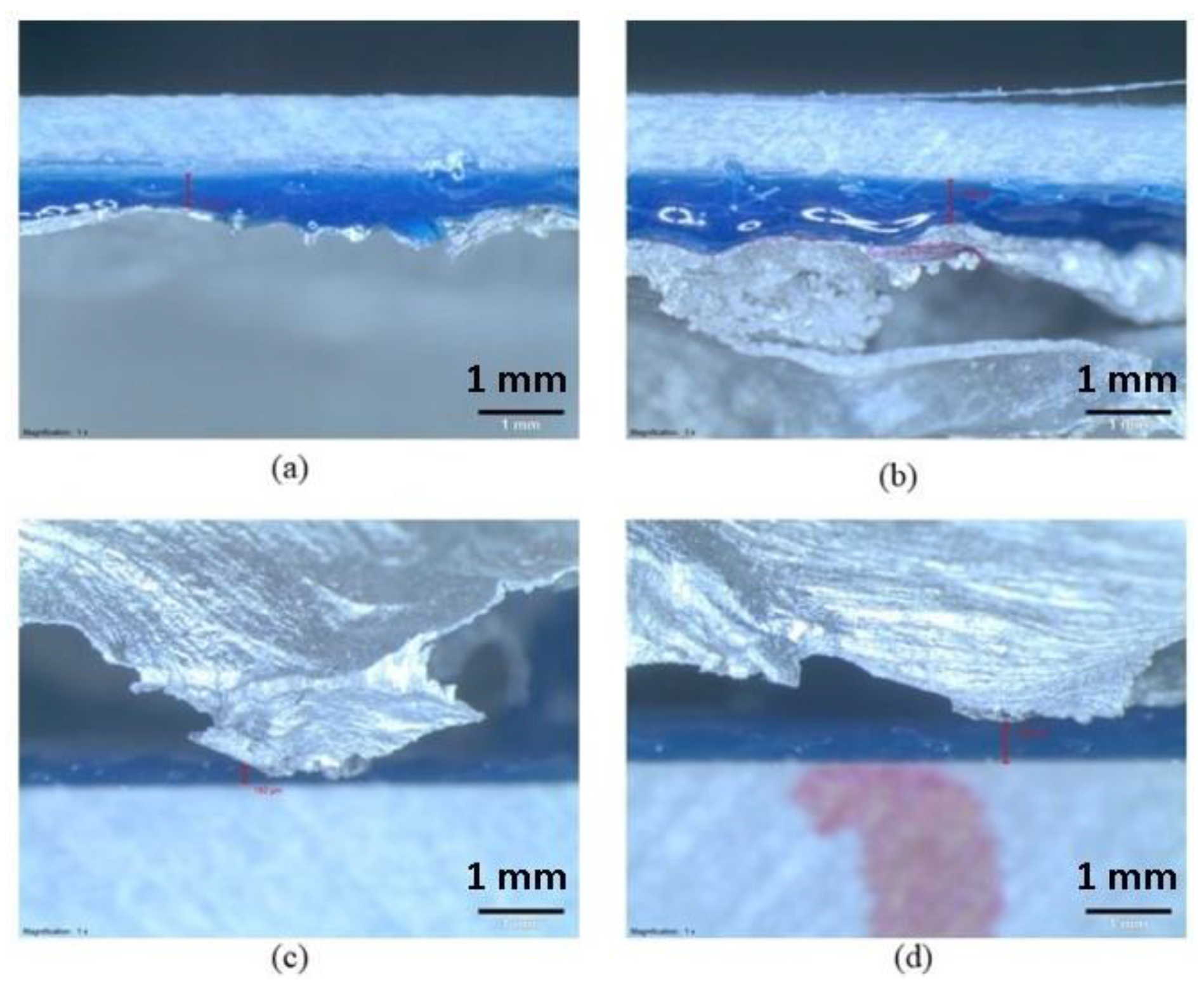
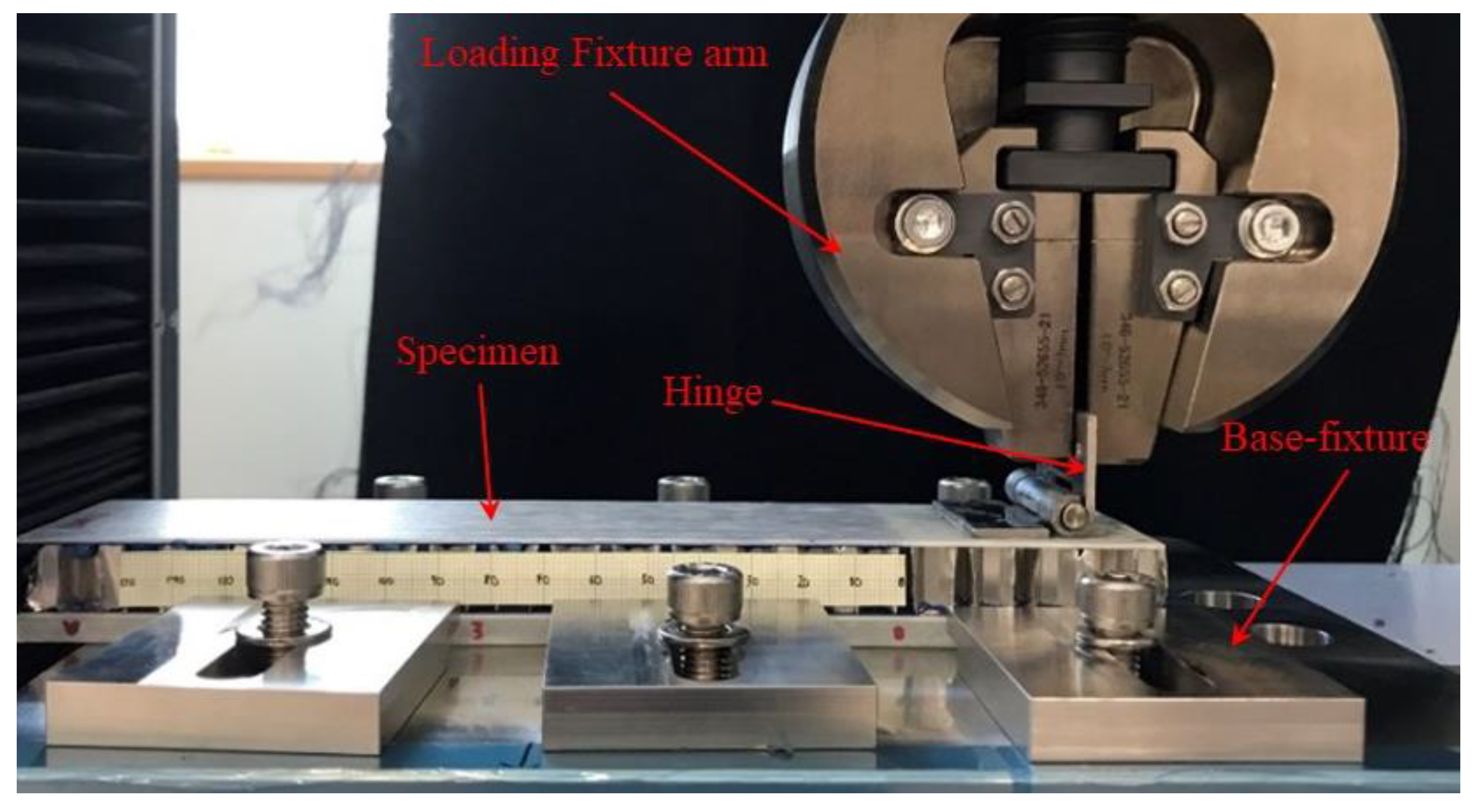

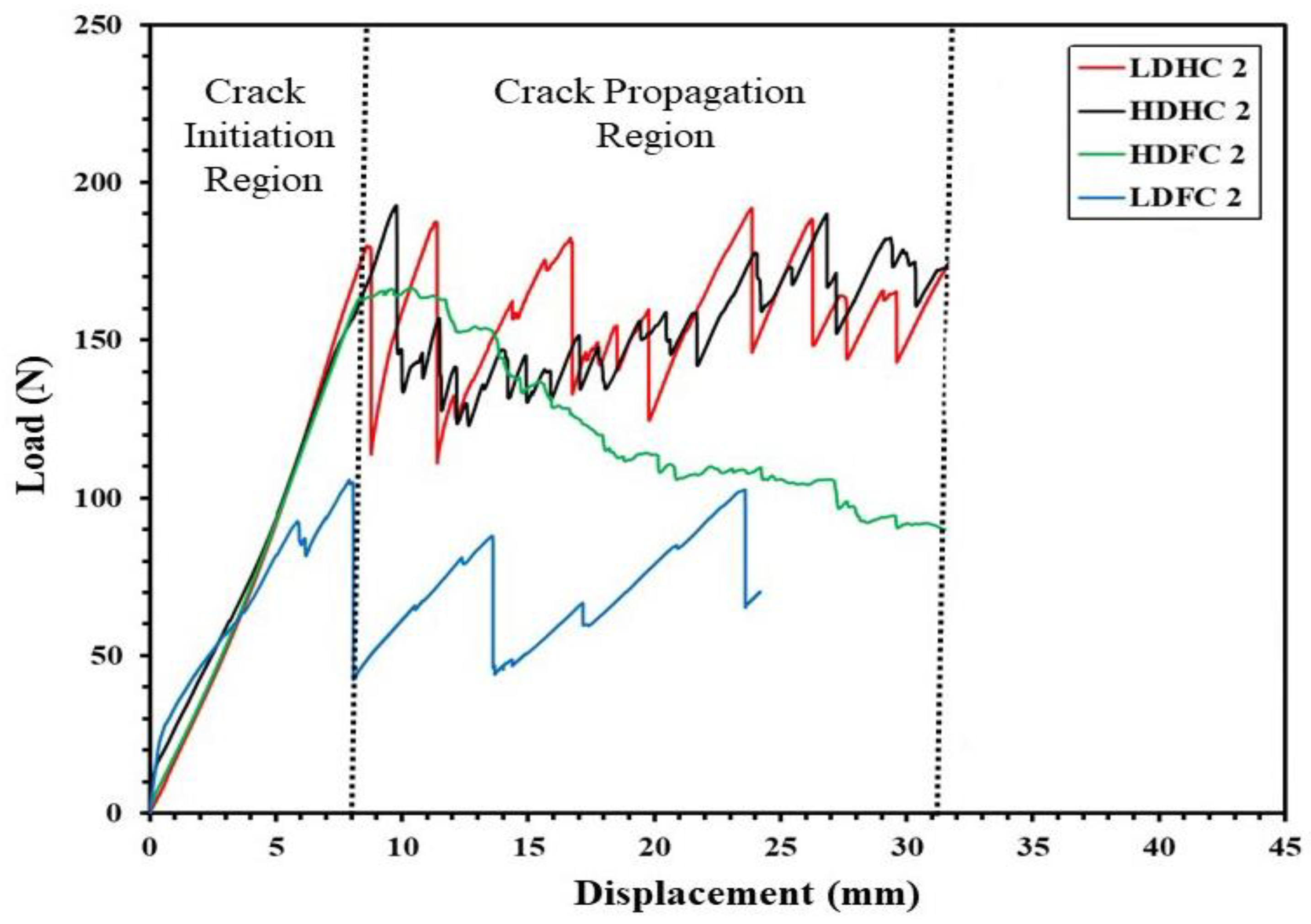
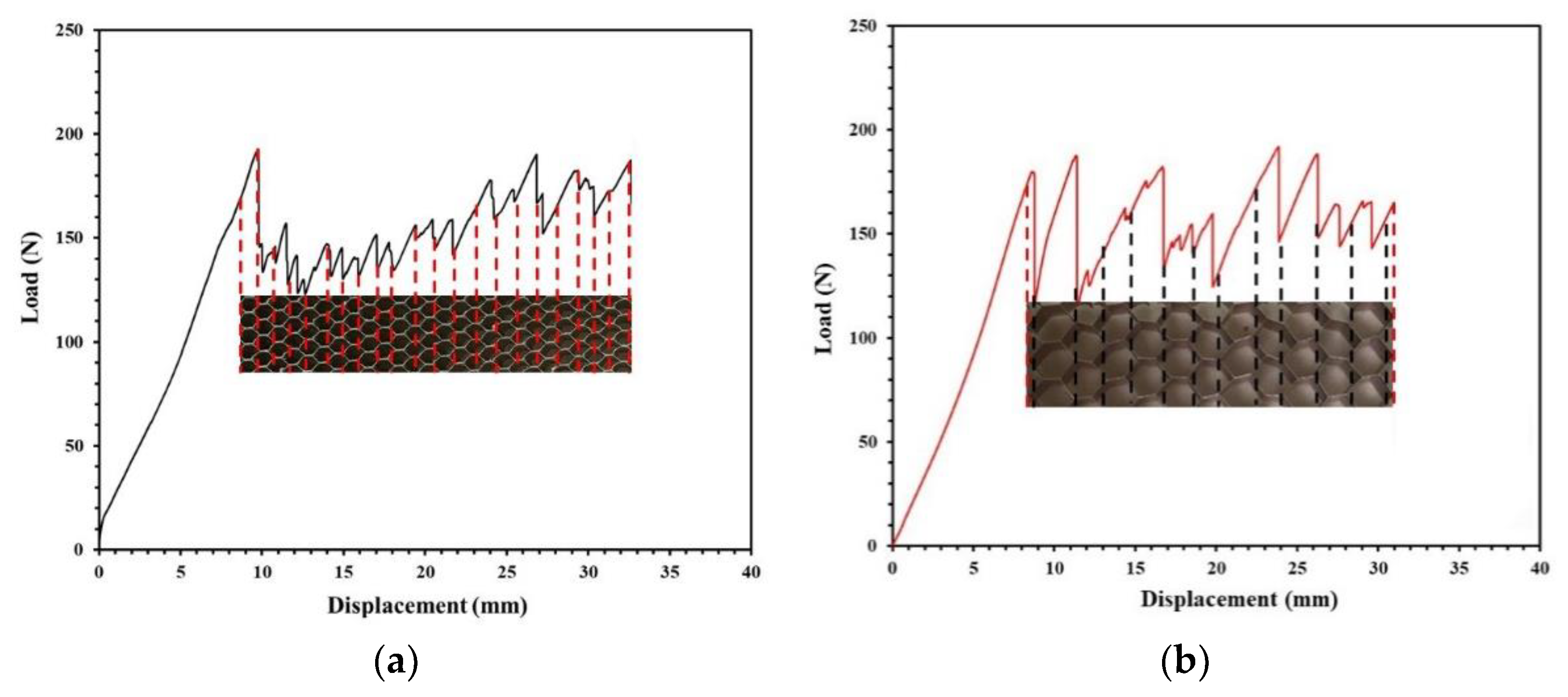

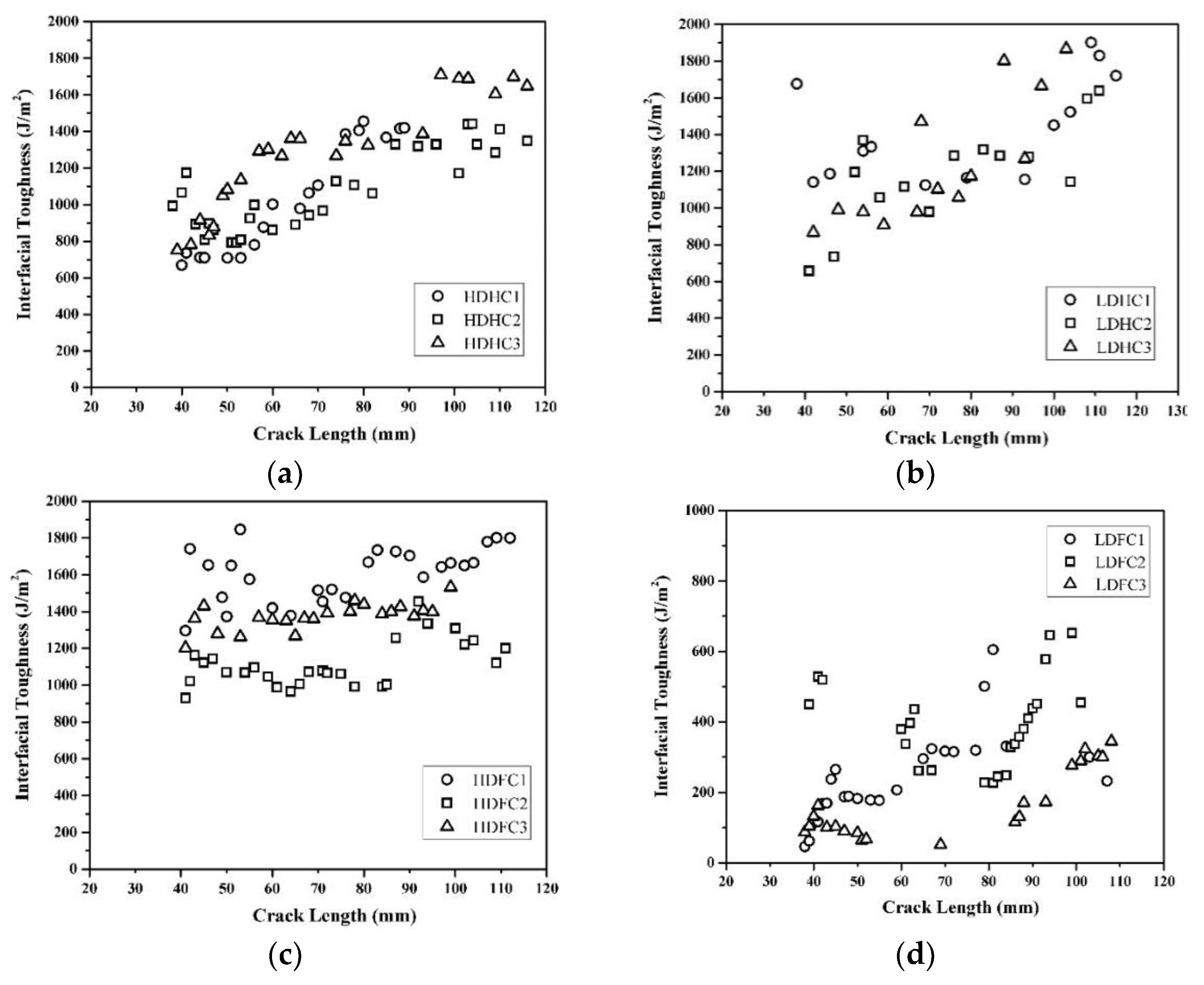
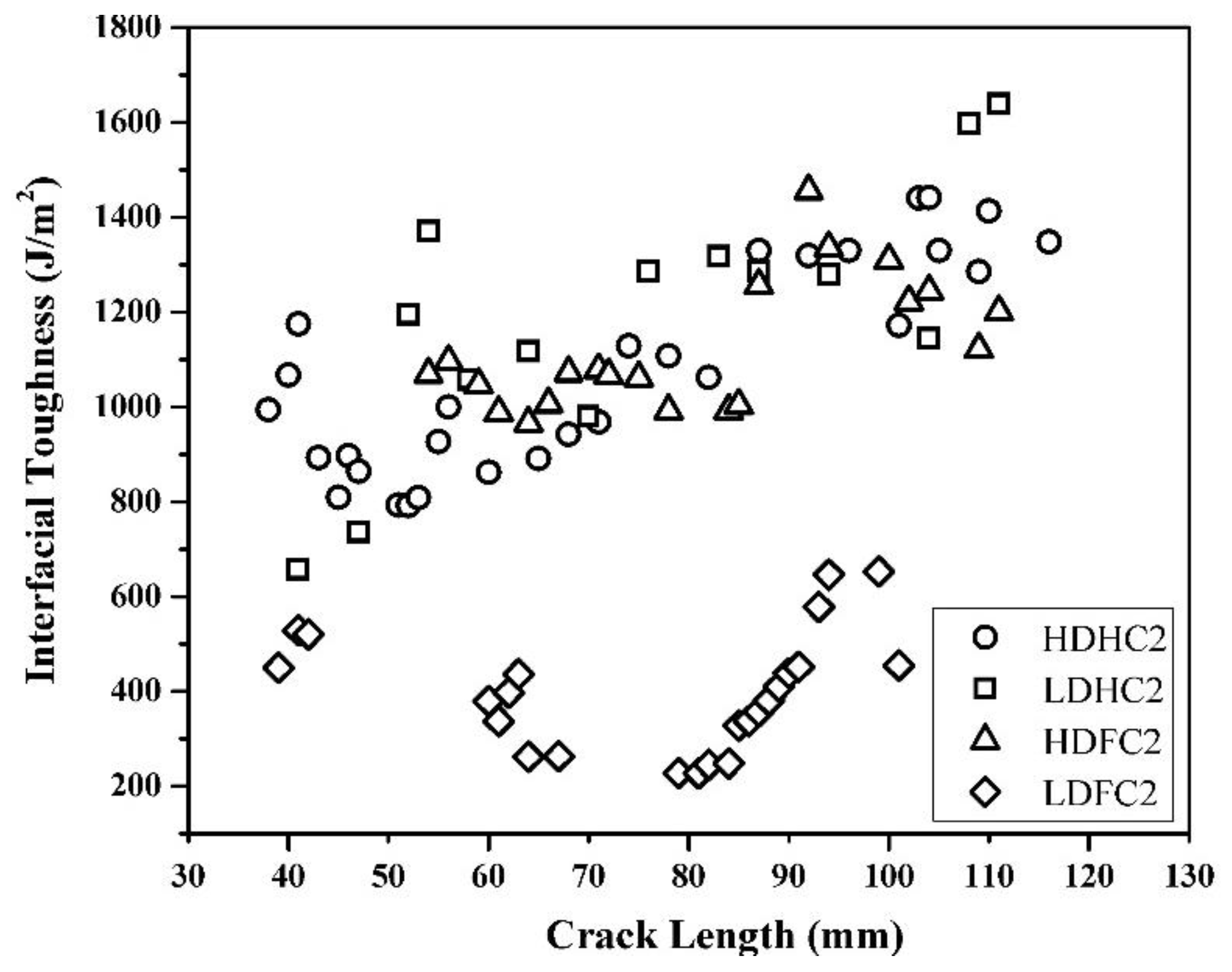

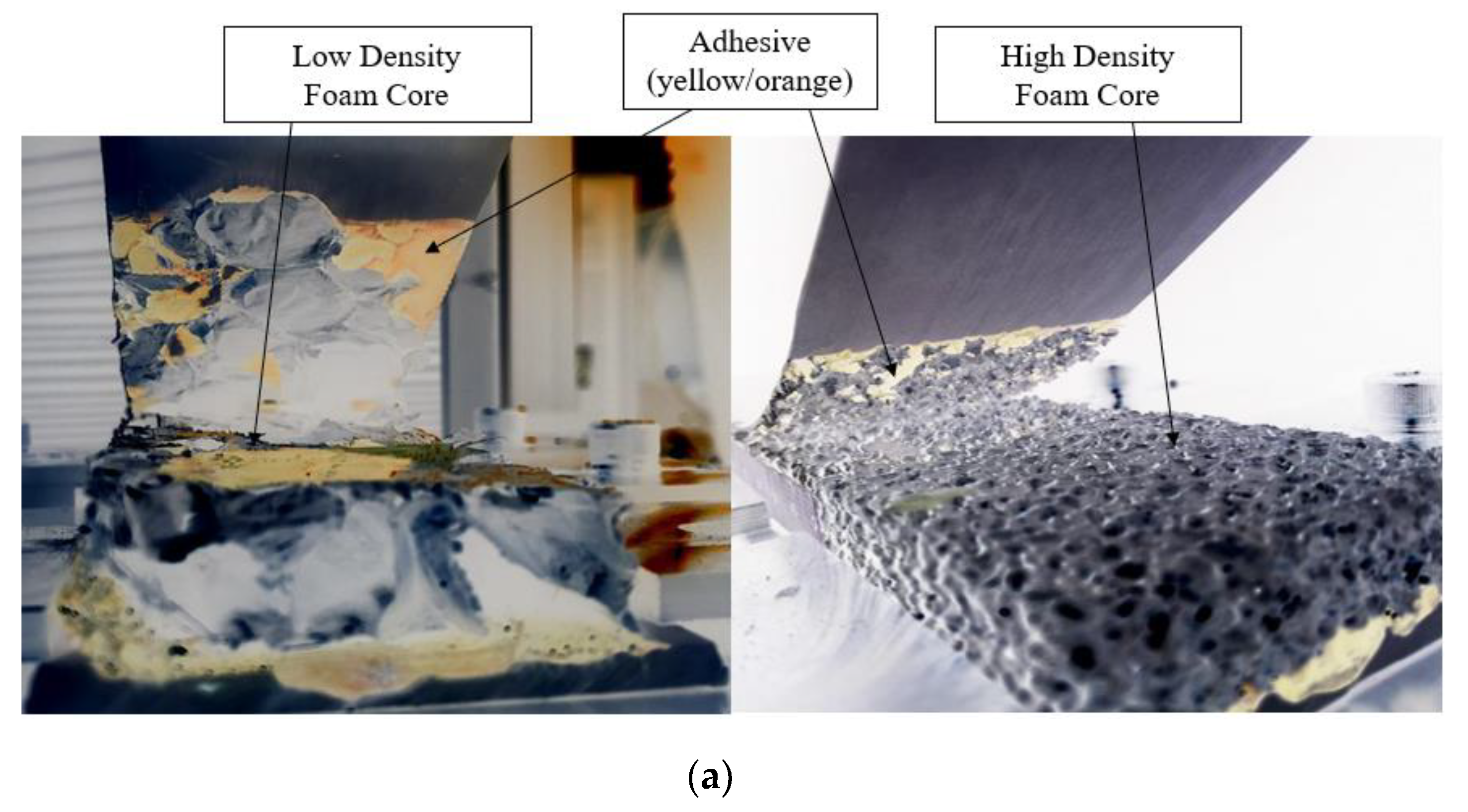
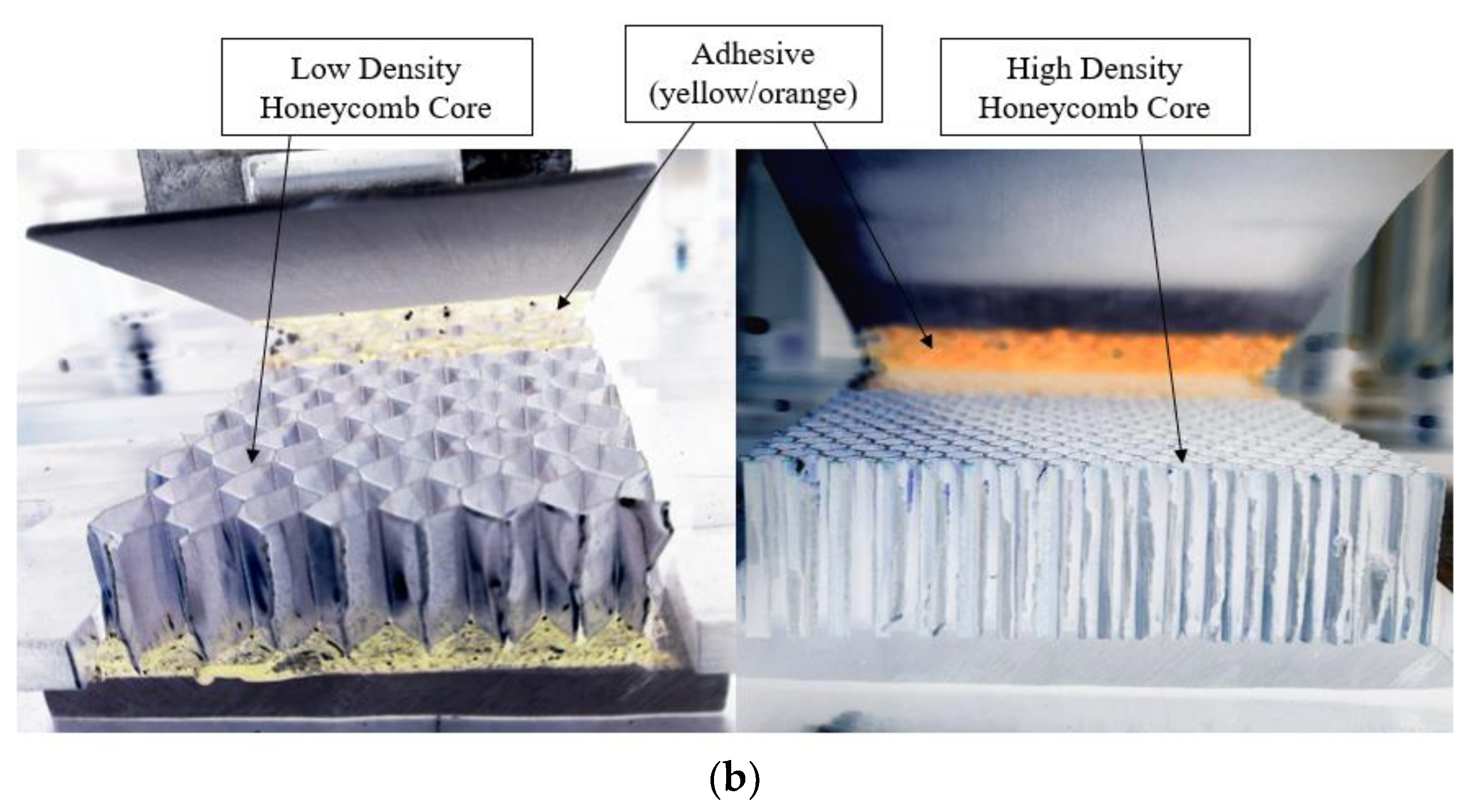


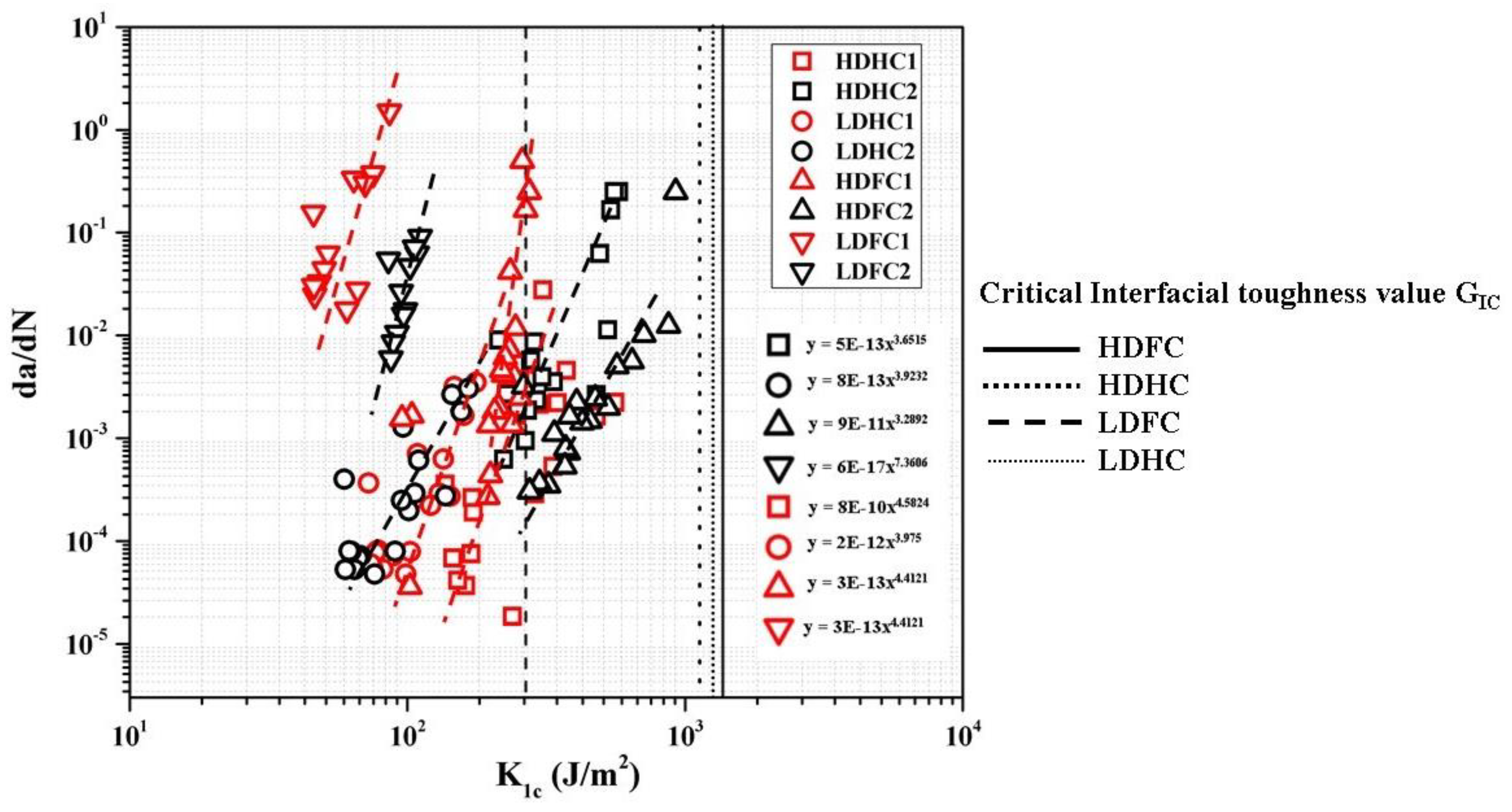
| Parameters | Selected Value |
|---|---|
| Configuration Name | Face Sheet | Core | Density (kg/m3) |
|---|---|---|---|
| SCB1-L | GFRP | Cymat® closed-cell Al foam | 170 |
| SCB1-H | GFRP | Alporas® closed-cell Al foam | 250 |
| SCB2-L | GFRP | Aluminum Honeycomb | 69 |
| SCB2-H | GFRP | Aluminum Honeycomb | 192 |
| Core Material | Density) | ) | |
| Al Honeycomb | 69 | 490.5 | 1.6 |
| Al Honeycomb | 192 | 873.4 | 1.6 |
| Cymat Al Foam | 170 | 400 | 3 |
| Alporas Al Foam | 250 | 1000 | 3 |
| Face Sheet Material | |||
| G17500 GFRP | 46,000 | 7000 | 800 |
| System Configuration Name | Face Sheet | Core | Nomenclature | λ (Stiffness Ratio) |
|---|---|---|---|---|
| SCB1 | GFRP | Alporas® | HDFC | 197.50 |
| Cymat® | LDFC | 157.06 | ||
| SCB2 | GFRP | Aluminum Honeycomb | HDHC | 190.93 |
| LDHC | 165.28 |
| (a) | (b) | ||
| Specimen Name | Average Interfacial Toughness (J/m2) | Specimen Name | Average Interfacial Toughness (J/m2) |
| HDFC1 | 1607.76 | HDHC1 | 1027.98 |
| HDFC2 | 1112.56 | HDHC2 | 1082.38 |
| HDFC3 | 1373.93 | HDHC3 | 1277.54 |
| LDFC1 | 243.26 | LDHC1 | 1424.89 |
| LDFC2 | 392.2 | LDHC2 | 1190.33 |
| LDFC3 | 165.58 | LDHC3 | 1241.12 |
| (c) | (d) | ||
| Specimen Name | Standard Deviation (J/m2) | Specimen Name | Standard Deviation (J/m2) |
| HDFC1 | 305.65 | HDFC1 | 148.4 |
| HDFC2 | 218.01 | HDFC2 | 126.17 |
| HDFC3 | 309.33 | HDFC3 | 72.37 |
| LDHC1 | 280.05 | LDFC1 | 126.87 |
| LDHC2 | 277.55 | LDFC2 | 124.79 |
| LDHC3 | 347.45 | LDFC3 | 97.46 |
| HDFC | LDFC | HDHC | LDFC | |
|---|---|---|---|---|
| δmax | δmax | δmax | δmax | |
| 1 | 9.08 | 7.23 | 8.42 | 6.39 |
| 0.8 | 8.12 | 6.46 | 7.53 | 5.71 |
| 0.75 | 7.86 | 6.26 | 7.29 | 5.53 |
| 0.7 | 7.59 | 6.049 | 7.044 | 5.34 |
| 0.6 | 7.033 | 5.60 | 6.52 | 4.95 |
| 0.5 | 6.42 | 5.11 | 5.95 | 4.51 |
| Specimen | HDHC2 | LDHC2 | HDFC2 | LDFC2 |
|---|---|---|---|---|
| m | 3.92 | 3.28 | 3.65 | 7.36 |
Publisher’s Note: MDPI stays neutral with regard to jurisdictional claims in published maps and institutional affiliations. |
© 2022 by the authors. Licensee MDPI, Basel, Switzerland. This article is an open access article distributed under the terms and conditions of the Creative Commons Attribution (CC BY) license (https://creativecommons.org/licenses/by/4.0/).
Share and Cite
Selvam, V.; Sridharan, V.S.; Idapalapati, S. Static and Fatigue Debond Resistance between the Composite Facesheet and Al Cores under Mode-1 in Sandwich Beams. J. Compos. Sci. 2022, 6, 51. https://doi.org/10.3390/jcs6020051
Selvam V, Sridharan VS, Idapalapati S. Static and Fatigue Debond Resistance between the Composite Facesheet and Al Cores under Mode-1 in Sandwich Beams. Journal of Composites Science. 2022; 6(2):51. https://doi.org/10.3390/jcs6020051
Chicago/Turabian StyleSelvam, Vignesh, Vijay Shankar Sridharan, and Sridhar Idapalapati. 2022. "Static and Fatigue Debond Resistance between the Composite Facesheet and Al Cores under Mode-1 in Sandwich Beams" Journal of Composites Science 6, no. 2: 51. https://doi.org/10.3390/jcs6020051
APA StyleSelvam, V., Sridharan, V. S., & Idapalapati, S. (2022). Static and Fatigue Debond Resistance between the Composite Facesheet and Al Cores under Mode-1 in Sandwich Beams. Journal of Composites Science, 6(2), 51. https://doi.org/10.3390/jcs6020051







